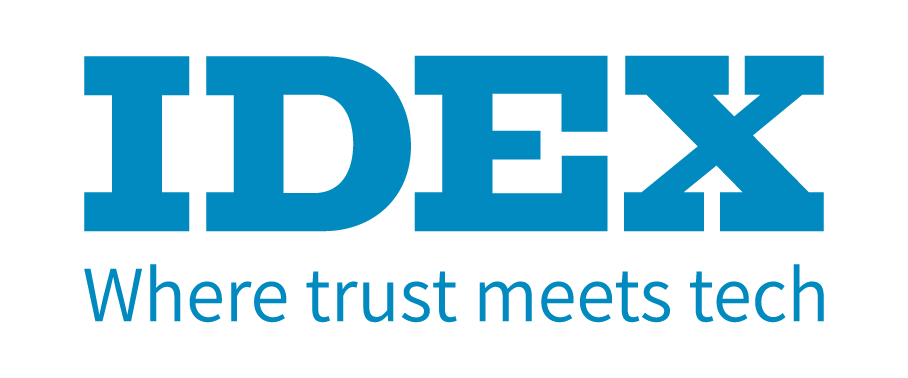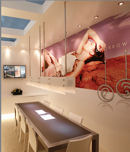Designing for Success: How to Make Your Stand Stand Out
March 31, 08
By Ronit Scheyer
A well-designed booth can attract customers like bees to a summer picnic, while a stand that is sloppily put together has the potential to completely ruin your show experience.
Along with promotional activities, networking and post-show follow-up, one of the most important aspects of exhibiting at a trade show is stand design. A well-designed booth can attract customers like bees to a summer picnic, while a stand that is sloppily put together has the potential to completely ruin your show experience.
Although it’s true that there are many other factors that determine whether or not a particular show is a success for you, there’s no denying that the way you design your booth says a lot about your company. A customer milling around the event floor, especially one who is unfamiliar with you, will probably take their first impressions of your company from what they see at your display. If you don’t make a good impression from the start, you may never have another chance.
Succinctly put, your tradeshow booth design must clearly and quickly communicate your message – who you are, what benefits you have to offer and why you are the best choice for your customers, according to trade-show-advisor.com, a knowledge base resource for event participants. The key, they assert, is to identify during the conceptual stages of your booth design the single most important message you want to communicate and to implement it. In other words, what message do you want potential customers to get in the first three seconds? With this clear goal in mind, your design team (internal or contracted) can create graphics, signage and overall design to deliver that message in a way that resonates with those you’re trying to target.
The Trade Show Exhibitors Association (TSEA), an information provider for exhibit and event marketing professionals, explains that a company’s trade show exhibit is a marketing opportunity – the chance to make a quick impression on buyers and convince them to come to you – and a vital part of an integrated marketing effort. The usage of “quick impression” here is not an overemphasis – TSEA argues that the right booth design is critical because “the chance to grab a potential customer’s attention passes quickly for an exhibitor (three seconds is all you get).”
To create a winning booth, they suggest designing it so that visitors can navigate easily without feeling crowded – keeping the atmosphere intimate and removing any barriers between yourself and your audience. Make sure the message you are conveying (with signs, display, setup) is simple, and easily readable, so as to not overload visitors with information, but, by all means, use such signs and graphics for visual stimuli to focus visitors’ attention on your message.
 |
Within a write-up of ten common exhibit marketing mistakes to avoid, TSEA lists both “failing to give visitors an incentive to visit your booth” and “failing to use the booth as an effective marketing tool” as things that can prove detrimental to your exhibiting experience.
Unless they are well-established customers with a history of doing business with you, people need to be given a reason to come and visit your stand. Especially at the major trade shows, there are hundreds, sometimes thousands, of products and other companies vying for buyers’ attention. Your booth design must say something unique and give them an incentive to pass up everyone else and step into your stand.
At trade shows, people are always on the lookout for what’s new. Even if you don’t have anything innovative to introduce, consider ways in which you can present what you do have from a new angle.
In addition, it is important to remember that buyers attending trade shows will be inundated with information about dozens and dozens of different companies, products and people. It’s worth asking yourself what your overall stand design environment will do to enhance memorability – in other words, how can you use your display to ensure that the customer remembers you and not the guy three booths down?
TSEA suggests opting for large graphics – pictures can paint a thousand words – rather than a lot of words and phrases. In places where you do have words or slogans, make sure the message is consistent and the sign accessible. Put it out in front, and place it high enough so that it won’t be blocked by the crowds milling past your display. Any presentations or demonstrations you utilize are also a vital part of your exhibit marketing, and creating an experience that lets customers use as many of their senses as possible (sight, sound, touch) will enhance their overall sensory experience and enhance the possibility that they will remember you.
When thinking about how to improve your stand display, remember that details matter. Even a factor as seemingly arbitrary as color must be considered, as Blackberry Press, an integrated Illinois-based advertising agency, opines. While taking advantage of the back walls of your display in order to set your booth in a color that enhances the mood, they say that the main colors of the stand should be limited to three or less, in order to increase the simplicity of your design. (This applies also to textures that you use, such as brushed metal, matte vinyl and clear acrylic.)
Exhibitor Online offers tips for exhibitors in the area of stand design down to the details of how to reduce glare from harsh show floor lights or strong booth lighting. This is especial ly important for those selling jewelry, which has its own metallic shine.
They recommend reducing the quantity of light from a single source. If the brightness level of the lights can be moderated, the reflection off the jewelry will look more like a soft sparkle than a harsh glare. They also advise working with the angle of the light source and positioning the light source so that it reflects away from the viewing angle, as well as adding glare-reducing devices, such as retrofit louvers or screens to help control the glare and diffuse the light. This will create a softer and more inviting atmosphere.
The importance of doing your research as to what kind of stand design works best for you at which trade exhibition – taking into account size and the logistical needs of your display – cannot be overemphasized. All in all, it’s vital to remember that, especially for first-time customers, your stand design is a representation of the identity of your company.